- Home
- slideshows
- miscellaneous
- Toxic 'red tide' algae blooms are killing fish, turtles, and manatees in Florida - here's what it looks like and why it's happening
Toxic 'red tide' algae blooms are killing fish, turtles, and manatees in Florida - here's what it looks like and why it's happening
The sea algae that creates red tides, Karenia brevis, floats around in the Gulf of Mexico all the time. But with some additional nutrients, a sprinkle of wind, and ocean currents that flow just the right way, the algae can develop into larger toxic, oxygen-suffocating blooms.

Red tides kill fish by producing a powerful brevetoxin that harms their central nervous system. "Ultimately, fish die because their gills stop functioning," the Florida Fish and Wildlife Conservation Commission explains on its website.
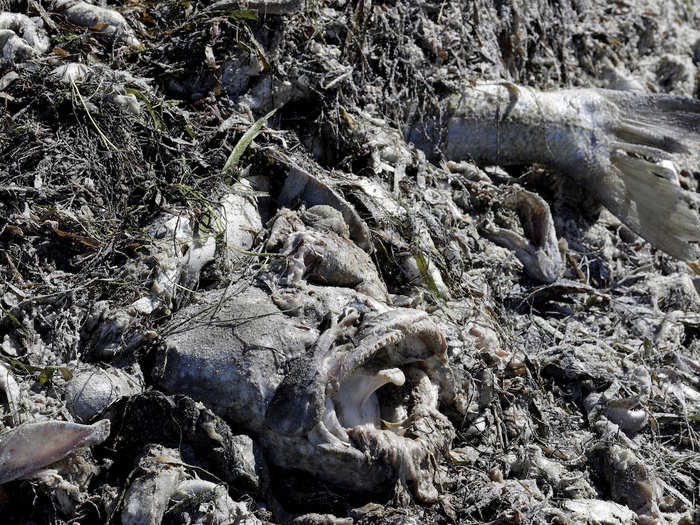
"Signs of intoxication in fish include violent twisting and corkscrew swimming, defecation and regurgitation, pectoral fin paralysis, caudal fin curvature, loss of equilibrium and convulsions," the FWC reports.
In addition to suffocating fish, the algae confuses sea turtles and kills manatees that mistakenly eat contaminated sea grass. Birds that eat contaminated prey also suffer.
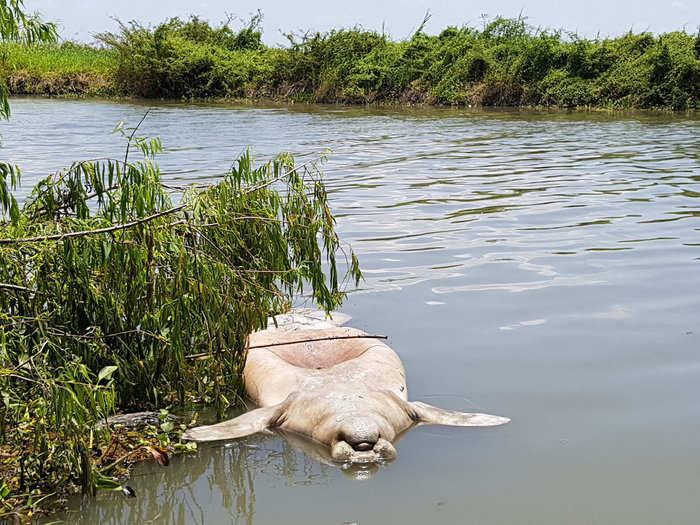
Manatees often die from eating contaminated sea grass — red tides killed more than 50 manatees around Florida last year, while more than 800 of the 1,000-pound beasts were killed by algae blooms in 2013. The preliminary count this year is up to at least 92.
Bird sickened by the algae become weak and unable to stand, get wary of flying, and can develop seizures and dehydration.
Blooms can also kill shrimp, sponges, sea urchins, crabs and shellfish.
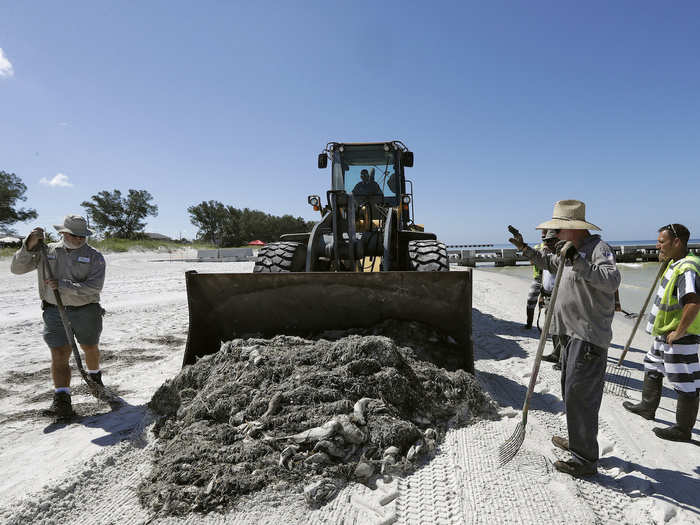
Scientists aren't sure whether the invertebrates die because of the brevetoxin or the dangerously low oxygen levels that algae create. (Red tide lowers dissolved oxygen levels in the water, which makes it hard for living things to survive.)
This algae bloom first started drifting toward the Gulf coast of Florida in October and November 2017.
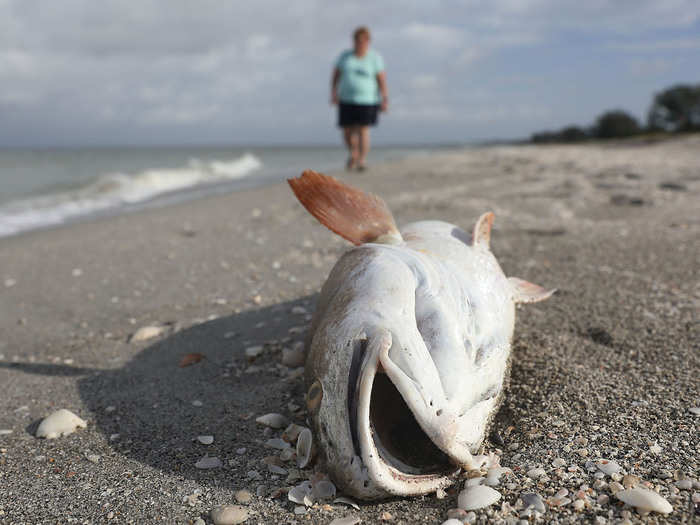
Scientists at the Mote Marine Laboratory in Sarasota say Florida's red tide algae blooms usually crop up between 10 and 40 miles offshore, then drift inland.
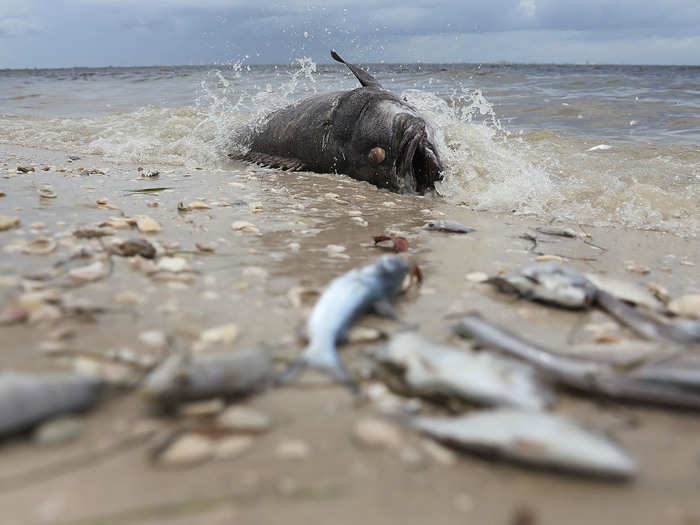
Over the past nine months, the blooms have multiplied and inundated the southern Gulf coast of the state.
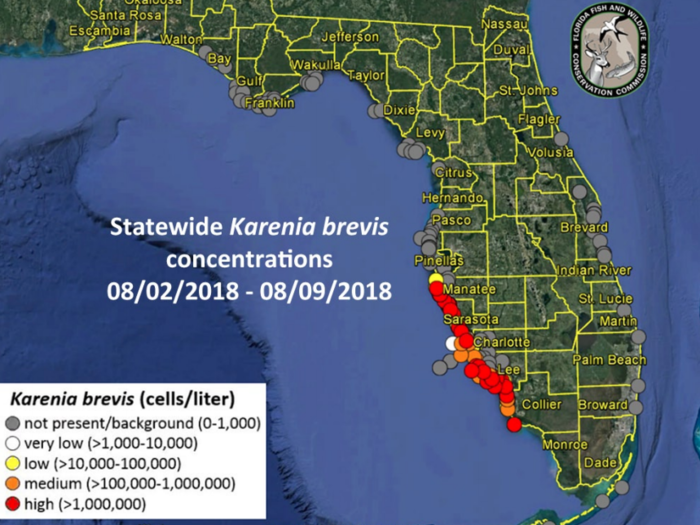
Near the shore, the algae mixes with stormwater runoff and nitrogen and phosphorous waste from fertilizers. The algae feeds on these chemicals, further fueling the blooms.
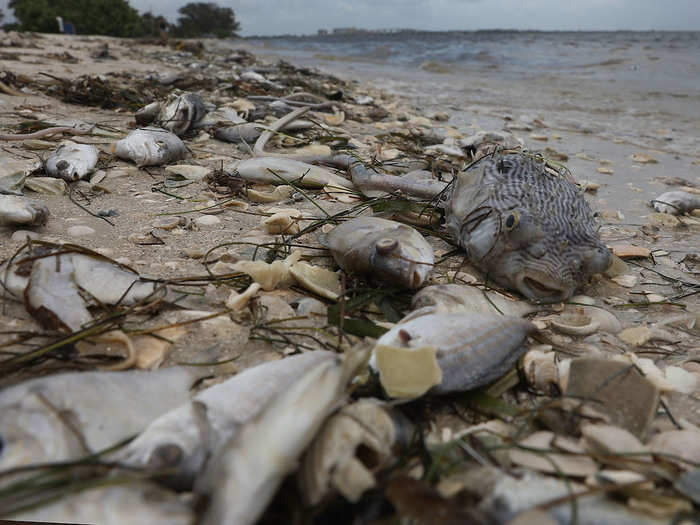
Besides all the rotting fish, the algae's gruesome toll this year includes at least 266 stranded sea turtles, 92 dead manatees, and a 26-foot whale shark carcass.
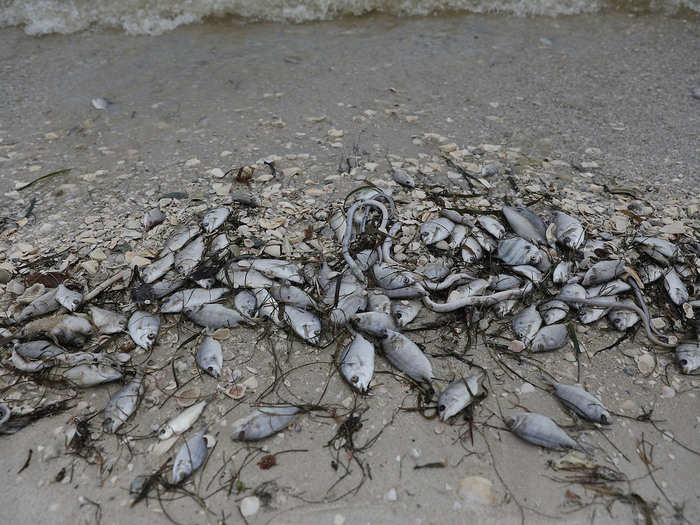
In June and July of this year alone, 53 beached sea turtles died, researcher Kelly Sloan from the Sanibel-Captiva Conservation Foundation told the Fort Myers News-Press.
Sources: Florida Fish and Wildlife Conservation Commission (preliminary numbers), ABC News
The shore smells terrible. But people can face worse consequences of the blooms.
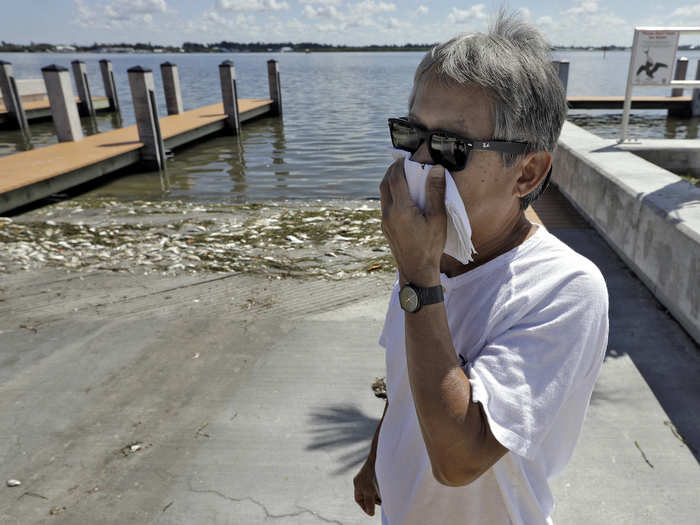
People who breathe in the air around red tides can suffer coughing, sneezing, and teary eyes. Swimmers can develop irritated skin and burning eyes.
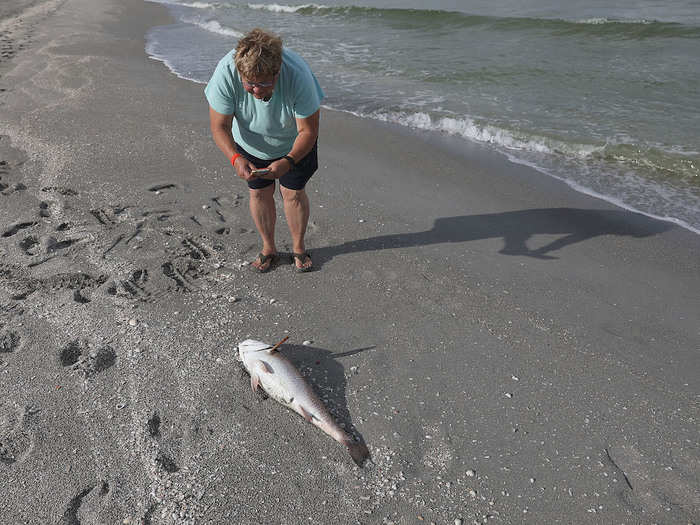
The Florida Department of Health recommends that people living near beaches affected by red tides should close their windows and run an air conditioner with a good filter. Airborne toxins can travel up to a mile inland if the wind is blowing that way.
Florida Governor Rick Scott declared a state of emergency in seven counties lining the southwestern coast earlier this week.
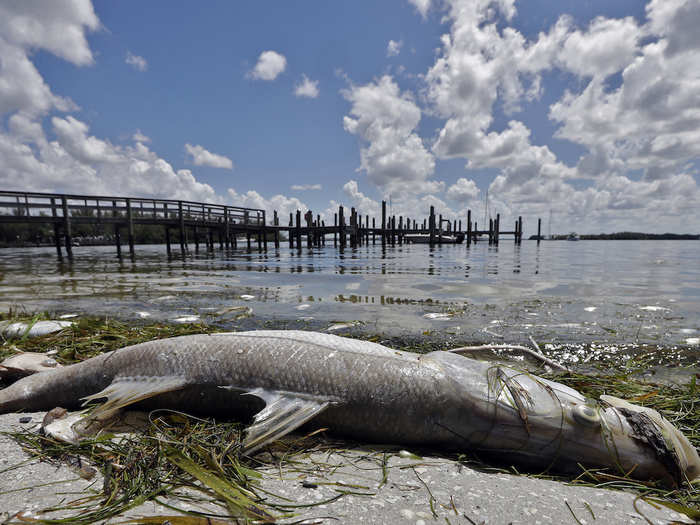
"As Southwest Florida and the Tampa Bay area continues to feel the devastating impacts of red tide, we will continue taking an aggressive approach by using all available resources to help our local communities," Gov. Scott said in a press release.
The Florida Department of Environmental Protection has pledged $3 million in grant money for the cleanup so far.
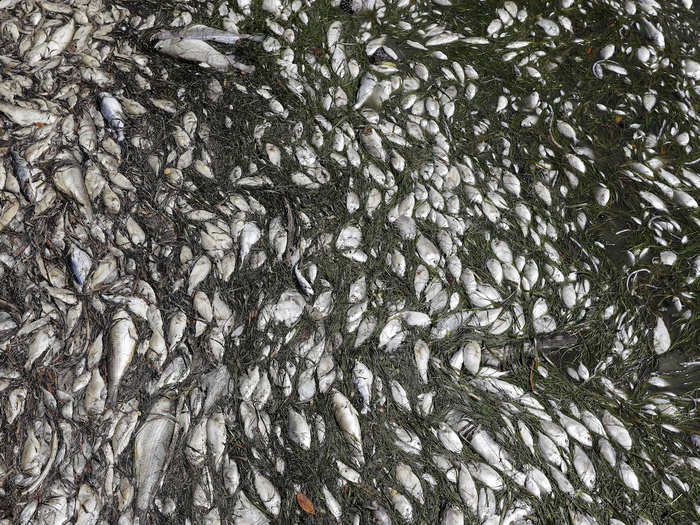
Source: Florida Governor Rick Scott
Intoxicated sea turtles who eat contaminated food swim in circles, loose coordination, and suffer muscle twitches. Some dazed turtles get stranded on the shore, while others drown because they can't lift their heads to the surface to breathe.
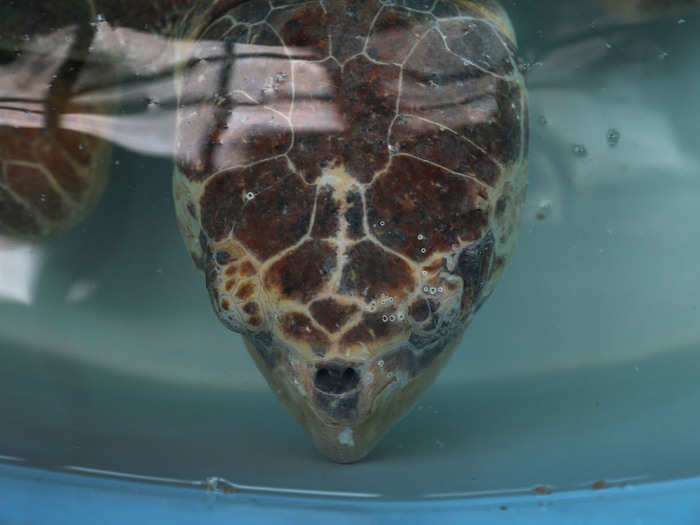
The lucky turtles are found before they die and get sent inside for checkups and rehab. It can take up to 50 days to flush out all the toxins from a turtle's system.
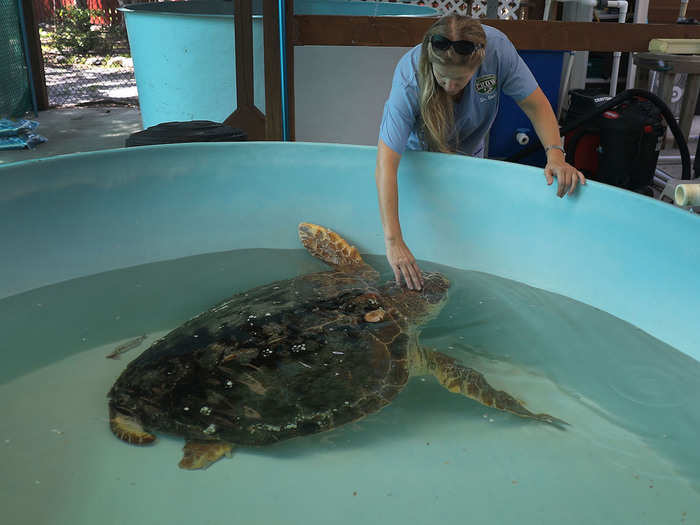
The reasons that algae blooms develop are complex. They've been documented around the Gulf of Mexico since the 1700s, but there's some evidence that K. brevis will be able to grow faster as carbon dioxide concentrations in the atmosphere increase. That means that in a warming world, algae may be able to bloom in warmer waters and become more potent and powerful.
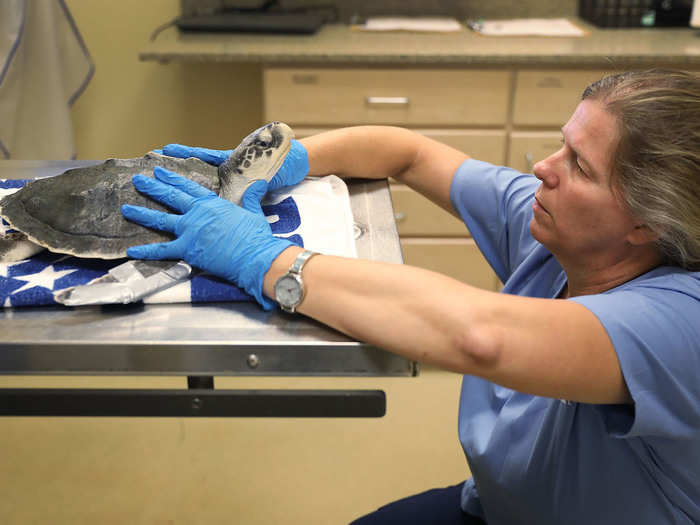
Source: Mote Marine Laboratory, Washington Post
Scientists used to release copper sulfate into the water to curb red tides, but they've discovered that's toxic to marine life, too. So researchers are working on more sustainable ways to control algae using clay. But there's no quick fix yet.
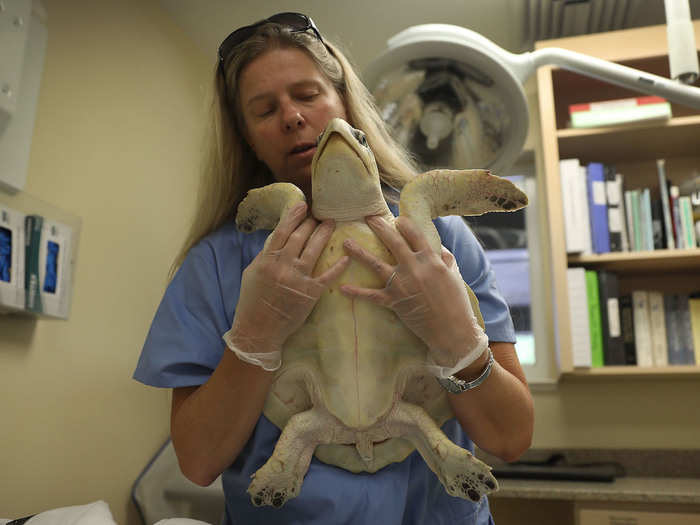
Source: Mote Marine Laboratory
Popular Right Now
Popular Keywords
Advertisement